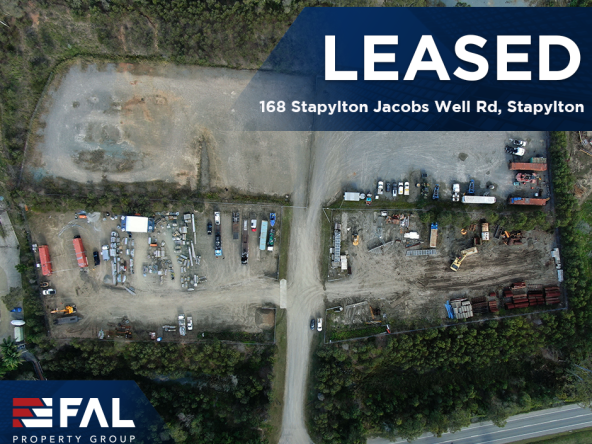
Most retail properties can be improved from an investment perspective. Whilst the location of the property can’t change, you can do things within the property that will very likely add value or investment stability. On that basis, many things become an evolving strategy for the landlord. A business plan for the asset will help you as the investor do that. An experienced retail property manager will help with the process.
In greater Brisbane, there are plenty of retail precincts and zones for investment focus. You have some choices to make with identifying the ideal assets that may suit your investment plans. Single shops, strip retail, and shopping centres of all sizes offer investment opportunities. Always investigate the asset and the asset type completely before purchase. A due diligence condition in a contract will help you do that.
So where can you start your review? A highly performing retail asset is usually a reflection of information gathering, quality lease documentation, selected tenants, good planning, sound negotiations, and specific controls. In retail property, that can involve several things. Consider these as some of the main issues to get started:
- Anchor tenants – always look at the anchor tenants lease with care and thoroughness. Understand the base rents that are being paid and any turnover rent provisions that may apply. The anchor tenant should be attracting customers to the property in a consistent way. The terms of the ‘anchors’ lease will set the rules of occupancy. How long have you got the anchor tenant in the property? Are they doing the right things for business generation and customer attraction?
- Specialty tenants – the selection of specialty tenants in a property should be chosen for relevance to the location, the shopper demographic, and the anchor tenant. When you look deeper into a tenant mix, some tenants will be trading better than others; you can usually see that through a simple visit to the property to look at levels of stock and shop presentation.
- Sales figures – review the sales figures for the tenants. In a retail property, those figures are usually compiled and kept for analysis by the owner or centre manager. Look at the sales figure trends over time, and the MAT (moving annual turnover) for the individual tenants or the merchandise groups. Some tenants will be trading more successfully than others. Look for those differences.
- Clustering concepts – a successful retail tenant mix is usually a reflection of well-chosen tenants placed in proximity to others of a like or complementary nature. That concept is called clustering. In a large retail property, there will be several clusters to look at and consider. Are the clusters ‘successful and thriving’ within the mix of other tenants?
- Marketing plans – ask to see the marketing plans for the property or tenant. Some tenants will have their own marketing plan to pull in customers; destination tenants do that. Other smaller specialty tenants in a shopping centre will usually contribute to the overall marketing plan for the tenant mix.
- Tenant mix and placement – look at the entrances of the property to see what tenants are positioned in those zones. The highest rents should be coming from those tenants in those ‘customer entrance points’. Ask about the rents and ask about the trading figures for those well positioned tenants; premium rents should be achieved in those zones relative to shop size and business types. Some tenants can pay more rent per unit of area than others; the reason for that evolves from the business type and the margins achievable from sales turnover less occupancy costs. Different business types have unique levels of occupancy costs.
- Rental structures – in a shopping centre there will be different rental types and market rents to consider. A tenancy schedule will help you investigate those numbers on a tenant by tenant and lease basis. Look for the rents that have been set by the market, versus those that have been set by fixed rental escalations in the lease. What are the rental averages for the property and how do they compare to other properties in the region?
- Lease documentation – the occupancy documents in a shopping centre will be complex and unique. Every lease should be reviewed for factors that could impact investment returns for the landlord over time. Look for factors such as rent reviews, lease expiry dates, outgoings recoveries, rent types, and lease conditions. When in any doubt about a lease and or a tenancy document, ask more questions and get legal opinion.
- Net income results – the net returns for a retail property as an investment will be impacted by vacancy factors, arrears, lease documents, property expenditure, and the tenant mix. Look at the history of the property over the last 12 months to understand what those factors have been doing; compare those numbers to the industry averages in the location for the property type. Are those numbers ‘real and accurate’, or have they been artificially boosted by strategic changes in the property?
- Third income streams – there are extra rentals that can be obtained in a property through planning and negotiation. An example would be storage rents, signage licences, kiosk tenants, short term occupancies, and car parking. Review all other rental streams and look for the ‘special ones’ that boost income all that bit more.
From these ten simple strategies and methods of review, there are things that you can investigate as part of considering a retail property purchase in Brisbane this year.
FAL Property Group has one of the largest private property portfolios under management in South East Queensland. We provide the capabilities of a top tier organisation but without the red tape. If your assets deserve a management specialist, call FAL Property Group to discuss how we can tailor a management solution for your retail investment property.
Written by John Highman, Specialist Senior Commercial and Retail Property Agent Brisbane and Qld – Ph 0417 221 108.



